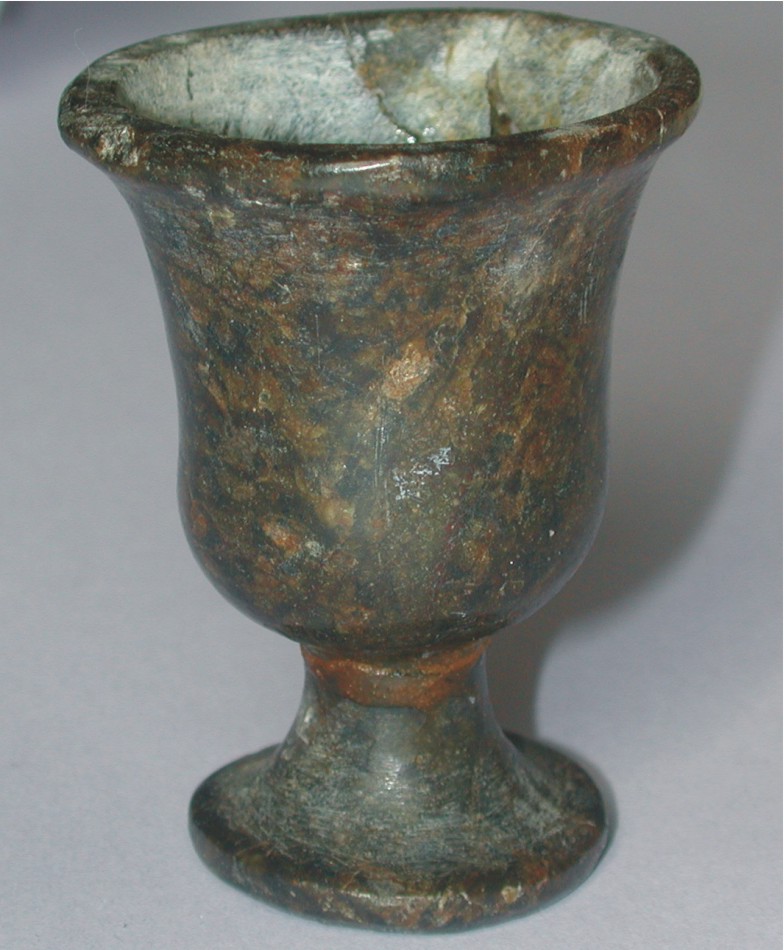W1474
W1474 Lotus-shaped chalice

Such lotus chalices seem to appear in the New Kingdom and are typically Egyptian. Other examples in faience can be seen in this gallery (W422). The lotus or water lily rises and opens up each day as the sun comes up. It was thus associated with rebirth.
Spell 81 in the ‘Book of the Dead’ is for transforming oneself into a lotus: ‘Spell for assuming the form of a lotus. To be said by N. I am this pure lotus that has ascended by the Sunlight and is at Re’s nose. I spend my (time) shedding (i.e. the sunlight) on Horus. I am the pure lotus that ascended from the field.’ Translation from Allen (1974).
Some have suggested that its narcotic properties were also used by the Egyptians (see Harer 1985 and Emboden 1981). However, recent studies suggest that it could not have such properties (Counsell 2008). It is possible that the sweet smell, however, had reviving qualities. It was certainly associated with the erotic, which itself had revival connotations. In love poetry the beloved is described as being from the lands of incense. Mandrake fruits, which are scented and shown in New Kingdom drinking parties being sniffed, also have erotic qualities. It also seems that scent was a link with the gods. Indeed, Hatshepsut’s mother was said to have been awakened by the scent of the god Amun, and incense was very much associated with divinity.
References
Counsell, D.J. 2008 Intoxicants in ancient Egypt? Opium, nymphea, coca and tobacco. In R. David Egyptian Mummies and Modern Science, Cambridge: Cambridge University Press, 195–215.
Emboden, W. 1981. Transcultural Uses of Narcotic Water Lilies in Ancient Egyptian and Maya Drug Ritual. Journal of Ethnopharmacology, 3, 39–83.
Harer, W. B. 1985. Pharmacological and Biological Properties of the Egyptian Lotus. Journal of the American Research Center in Egypt, 22, 49–54.